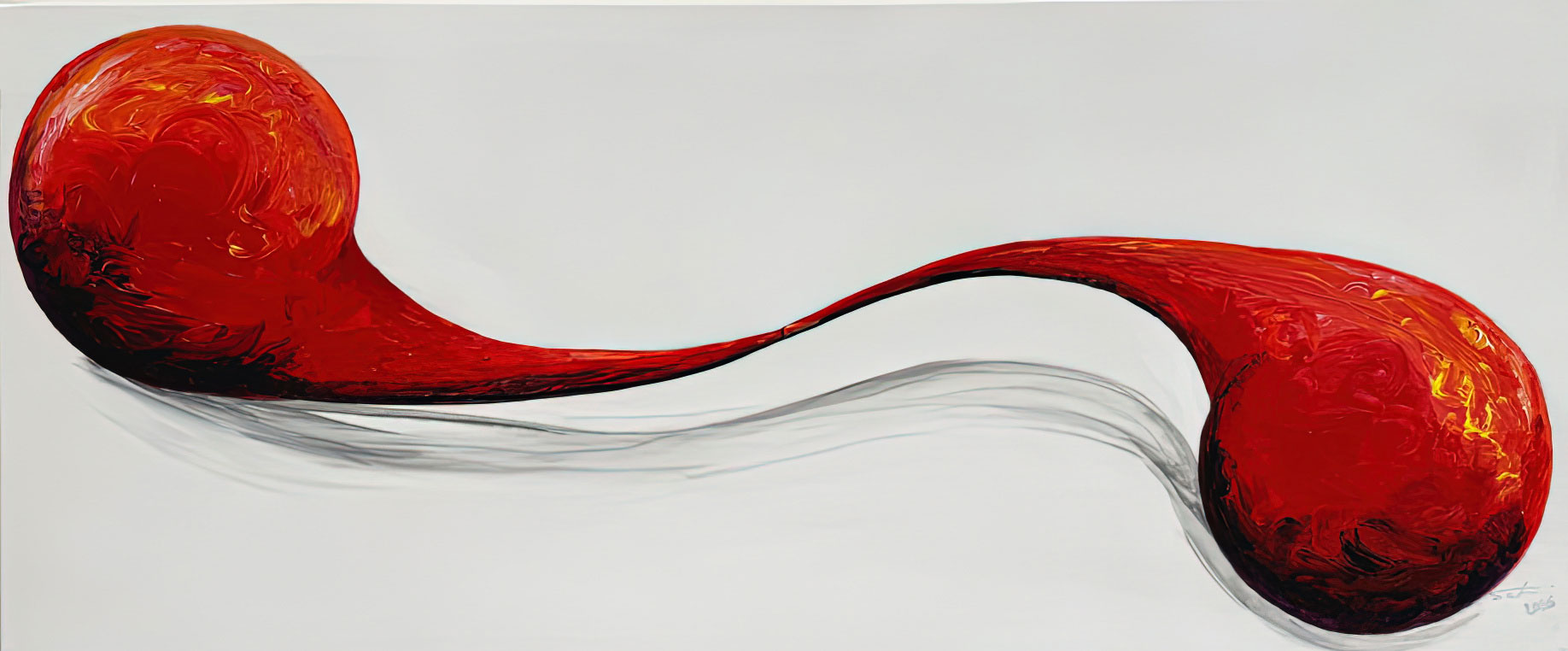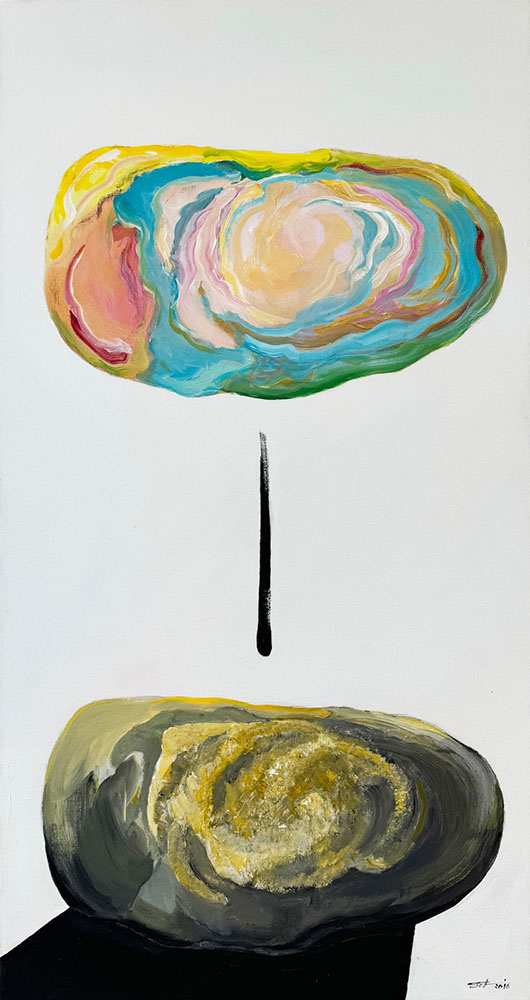PRESENTATION: Seta Manoukian (Ani Pema Drolma)-Dew Drops
 Seta Manoukian – Ani Pema Drolma is a Lebanese painter of Armenian descent. She was a prominent figure in the burgeoning Beirut art scene of the late 60s. In 1975 the civil war breaks out in Lebanon just as Seta begins teaching at the Lebanese University in Beirut. In 1985 she moves to Los Angeles, where she continues her work as an artist. In 2000, she joins a Buddhist Theravada Temple in Los Angeles, and in 2005 is ordained as a Buddhist nun in Sri Lanka. After a 10 year hiatus and a full devotion to her Buddhist practice, Seta Manoukian as Ani Pema Drolma returned to painting in 2016.
Seta Manoukian – Ani Pema Drolma is a Lebanese painter of Armenian descent. She was a prominent figure in the burgeoning Beirut art scene of the late 60s. In 1975 the civil war breaks out in Lebanon just as Seta begins teaching at the Lebanese University in Beirut. In 1985 she moves to Los Angeles, where she continues her work as an artist. In 2000, she joins a Buddhist Theravada Temple in Los Angeles, and in 2005 is ordained as a Buddhist nun in Sri Lanka. After a 10 year hiatus and a full devotion to her Buddhist practice, Seta Manoukian as Ani Pema Drolma returned to painting in 2016.
By Dimitris Lempesis
Photo: Marfa Projects Archive
In her solo exhibition “Dew Drops” Seta Manoukian displays works made in the last two decades which have never been exhibited in Lebanon. The exhibition includes a wide range of works from various series which are linked by threads of themes of work that have been present from the start of her career as an artist. Body fluids (blood), eggs, roses and bread became the subjects of her works. In seeing nature as continuous life and death in concert with a more dedicated practice in and commitment to Buddhism, and work creates a balance of two practices of art and Buddhism. Delicate and fertile eggs multiply and are supported by colorful structures, while others also crack, with the potential life lost. Blood spirals and moves in the boules as life, violence and death exist in the forms simultaneously. The themes of duality and delicate acts of balance and movement are of the most dominant themes in Seta’s works throughout her career. Heavy rocks both pull the hair but are simultaneously being supported by the unexpected strength of hair evoking a sense of suspension and balance of heaviness and lightness that people experience. While it’s unclear if they may be pulled up or down, the “Fluid” series challenge a notion of time-space and if the fluids are flowing down or up. Manoukian calls for visitors to consider Rumi’s quote while spending time with the paintings: “You are not a drop in the ocean, you are the entire ocean in a drop” and to look at the works with intuition, self-awareness and a turn towards one’s own consciousness. Seta Manoukian was born into a Lebanese-Armenian family and began to draw at an early age, taking private lessons with the well-known Lebanese painter Paul Guiragossian from 1960-1962. In 1963 she won first prize in an art competition organised by the Italian Embassy and received a three-month scholarship to study art in Perugia, Italy. Afterward, she studied at the Accademia di Belle Arti in Rome, graduating in 1966. In 1967 Manoukian returned to Beirut and began teaching at a high school, while continuing to paint. In the same year she had her first solo show at Galerie Alecco Saab in Beirut. She became involved with the politically committed, left-wing intellectual and artistic community in Beirut, whose feelings of despair vis-à-vis the political crises of the country and the Arab world she shared. In her work this translated into a series of studies of interior spaces, often with disturbing angles and empty of life, such as “The Sewing Machine” (1968) and “Mirror and Chair” (1968), as well as the paintings of the “White Period” series (c. 1970s). When the Lebanese Civil War broke out in 1975, Manoukian had just begun teaching in the Fine Arts Department of the Lebanese University. In the following years she was active on many levels, painting, teaching at the university and working with children in impoverished neighbourhoods, while also publishing two books about her work with children. In all these activities, her political commitment was a driving force, which also led her to create several posters to show her solidarity with the Palestinian cause. Her paintings of this period show her deep connection to her city, with street views in vivid colors and an occasional blending of urban elements from different locations that create fragmented pannels within the painting that look as if they were zoomed in with a camera. As the Civil War dragged on, Manoukian grew increasingly anxious and in 1985 she decided to leave. She relocated to Los Angeles, where she continued to work as an artist, joining the Sherry Frumkin Gallery in Santa Monica in the 1990s. She explored the theme of exile in the so-called T-Shapes series, such as Immediately “Afterwards” (1989), depicting a horizontal person “floating” above a standing one. The ambiguous feelings of the exile and of being displaced were also central to her three-part performance “My Father in the Tree” (1995). Her artistic practice is closely linked to her search for what she has called her “real self”, an expression of her innermost, spiritual world. Although she had previously defined herself as an atheist, S. Manoukian felt drawn to Buddhism and joined a Buddhist temple in Los Angeles in 2000. Feeling the need to concentrate on her spiritual path, she travelled to Asia to study and was ordained as a Buddhist nun in Sri Lanka in 2005, taking the name of Mother Sela. In 2006 she joined Tibetan Buddhism and became Ani Pema Drolma. During this time of profound spiritual study, she temporarily stopped painting, as she felt unable to combine the two intensive practices. In 2016, she resumed her artistic practice.
Photo: Seta Manoukian, Courtesy Marfa Projects
Info: Marfa Projects, Main street Port District, Door Nb 25, Beirut, Lebanon, Duration: 25/6/2024- , Days & Hours: Mon-Fri 11:00-18:00, Sat 14:00-18:00, https://marfaprojects.com/

